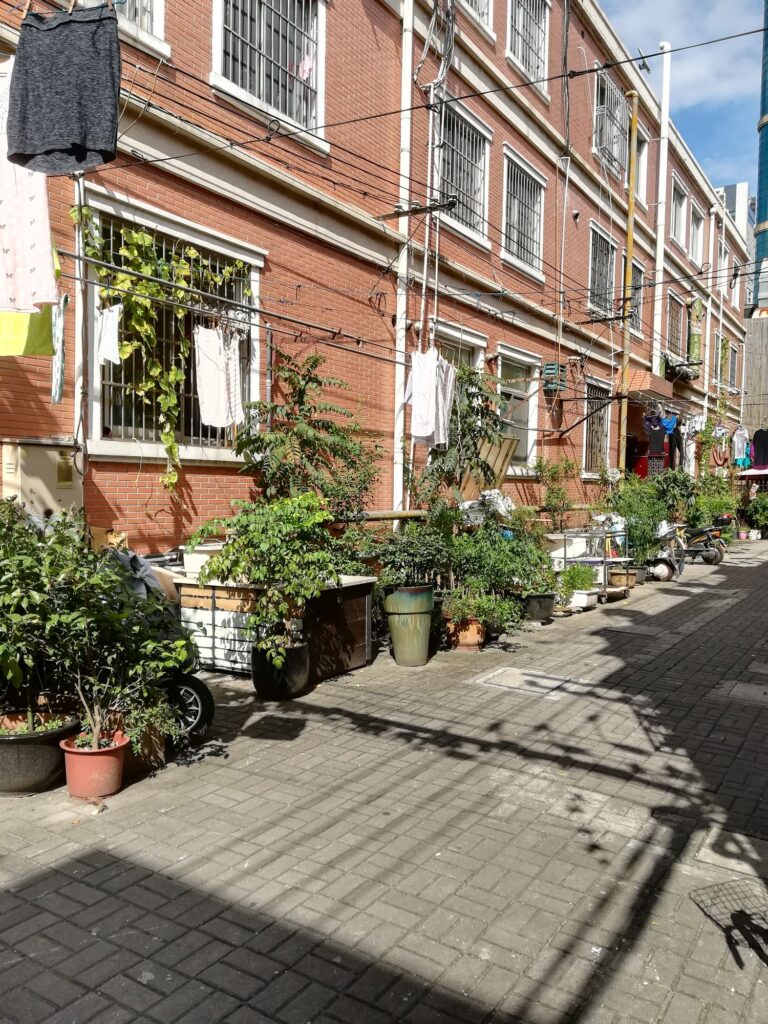Can “Made in China” Become a Beacon of Sustainability?

While growing up in Nanjing, China—the birthplace of SHEIN, the world’s largest fast-fashion e-retailer—Yun shopped at fast-fashion chains. [1] [1] All names of fashion designers have been changed to protect people’s privacy. But her perspective shifted as she witnessed the consequences of industrialization and overconsumption. “I saw tremendous environmental changes,” Yun says. “The pollution has become worse, as there is no regulation to protect our environment.”
Yun began considering the ethical implications of mass-produced cheap clothing, especially when it comes to exploitative labor conditions and the destructive impacts of waste and toxic chemicals. Now Yun is a fashion designer who prioritizes quality fabrics and dyes her creations exclusively with natural pigments from plants. “We need to act for the next generation,” she says. “And each little step matters.”
Yun represents a new cohort within China’s youth—a generation characterized by heightened eco-consciousness. She and other like-minded designers aim to make sustainable products more accessible for widespread consumption and to redefine the fashion landscape, one recycled thread at a time.
These designers’ efforts are especially important given their location in China, home to the world’s largest textile industry. China plays a pivotal role as the global epicenter of garment production. But the label “Made in China” is often associated with fast fashion—cheap clothing churned out at the dizzying speed of constantly changing trends.
Many Chinese and international clothing companies that manufacture in China have a profit-first focus. Their business model is based on driving production costs down by paying workers low wages to rapidly produce inexpensive and often substantially discounted clothing that is not meant to last long so that customers are tempted to buy more and more.
This fast-paced production cycle contributes to the destruction of the environment. China’s textile and clothing industries rely heavily on coal energy. The industry dumps wastewater that contains toxic dyes into the nation’s rivers. And in 2020, the country generated approximately 22 million tons of textile waste, only 20 percent of which was recycled.
As China grapples with pressing issues like pollution and unfair working conditions, Yun and other eco-conscious designers stand as beacons of change. They are weaving a narrative of hope and innovation in a world hungry for sustainability.
GREEN FASHION FROM TRADITIONAL PLANTS
In 2018, Shi embarked on a journey from the serene landscapes of Yunnan to the bustling metropolis of Shanghai. She brought with her the essence of her cultural heritage and a fervent desire to express her creativity through fashion design. Now in her mid-20s, the visionary designer crafts garments from sustainable and organic materials, often sourced from her hometown of Kunming—a testament, she says, to her roots.
Shi shares her design studio in Shanghai with many other Chinese designers embarking on a collective mission. They embrace a harmonious blend of tradition and innovation to craft eco-friendly garments that tell stories of cultural heritage and environmental stewardship.
Instead of using fossil fuel-based synthetics such as polyester, which have become staples of fast fashion, these designers are turning to locally sourced plant materials. They make clothing from the sturdy fibers of Chinese hemp, valued for its low water requirements and ability to capture carbon from the atmosphere. They’re reviving fabric made from ramie, a nettle-like plant that has been turned into delicate threads since the Han Dynasty thousands of years ago. As an alternative to toxic dyes, the designers infuse their garments with natural beauty. Safflower blooms yield red, orange, and yellow tones. Chinese indigo leaves lend deep blue hues while steeping textiles in ancient tradition.
As these young designers tread lightly on the Earth, they are cultivating deeper connections with the plants they utilize and helping nurture ecosystems. Through their dedication to responsible sourcing and cultivation, they are paving the way for a more sustainable and harmonious future.
At the same time, they are navigating a world deeply entrenched in online consumerism. So they must capture customers’ attentions and advocate for eco-friendly choices through a different model of online consumerism.
A SUSTAINABLE SOCIAL MEDIA STRATEGY
Fast-fashion companies like SHEIN rapidly grew to dominate the market in part because of a social media strategy called “haul” videos. In these glorifications of overconsumption, influencers try on piles of cheap clothes they’ve purchased or received from a company. Critics say that by doing this, influencers are modeling not just clothes but an environmentally destructive lifestyle of throwaway fashion and buy-and-return cycles. Yet these videos are popular even among eco-conscious generations. Social media hashtags like #haul, #sheinhaul, and #Amazonfinds (for hauls from Amazon.com) have garnered tens of billions of views.
Sustainability-focused fashion designers in China are also harnessing the power of e-commerce social media. But they are using their digital presence to advocate slow fashion through storytelling, images of nature, and captivating forms of education.
Lisa, a fashion designer in Beijing, uses China’s main communication app, WeChat, to construct a brand image aligned with her passion for sustainability. “Beauty, to me, is not about owning 50 dresses but having one or two that are ethically made,” she says. “It is about understanding deep in your heart that you are wearing something meaningful for the future and the environment. That is what I am doing here on social media—speaking out about what is happening around us.”
Lisa and other like-minded designers share videos and photo narratives that celebrate China’s breathtaking landscapes and the plants that yield their fabrics. They might feature images of mist-shrouded mountains in Yunnan as a designer describes how the tranquility of nature inspires their eco-conscious designs.
In other social media stories, the designers transport their audiences into their creative journey, from sketching the initial concepts to meticulously selecting fabrics and incorporating traditional techniques. They discuss the challenges and triumphs of sourcing sustainable materials in a bustling metropolis like Shanghai. They inform their followers about fashion’s environmental impact, inspire them to make conscious clothing purchases, and foster dialogue on sustainability.
In contrast to haul videos, this social media strategy encourages introspection and a reevaluation of the production and promotion of fashion. “As we engage in the entire process from fabric selection, tailoring, and sewing to creating a piece of clothing, we also engage with consumers,” says Lilli, a designer based in Shanghai. “We not only promote our product but also raise awareness about sustainability. Ultimately, when someone makes a purchase, it marks a small achievement for our society. Moreover, that, for us, is a small success.”
SLOW CHANGES IN FAST FASHION
China’s younger generation has become more interested in adopting a sustainable lifestyle. And backlash against fast fashion, both within China and internationally, has pressured corporations and governments to decrease their footprints. SHEIN has pledged to curb greenhouse gases by 25 percent by 2030. In 2022, the Chinese government declared its intention to recycle 25 percent of its textile waste, aiming to annually generate 2 million metric tons of recycled fabric by 2025. It remains to be seen how feasible and sincere these goals are, given the lack of transparency surrounding China’s recycling infrastructure and enforcement mechanisms.
Meanwhile, eco-conscious designers are still grappling with the formidable challenge of competing against fast-fashion corporations that have expanded across China and the globe. The appeal of the enduring, sustainable garments they design has yet to find a significant toehold within the escalating dominance of cheap, throwaway items.
In addition, pressure to follow new trends and buy high-fashion brands, mainly driven by Western countries, further marginalizes the market for recycled fabrics. Without a significant shift in consumer behavior and concerted efforts to address these powerful forces, the economic viability of textile recycling initiatives and shifts to more sustainable materials will continue to be undermined.
“I do not know if we can see improvement in China’s fashion industry in the next few years,” Lisa said. But she and other eco-friendly designers are determined to keep raising awareness and offering slow fashion alternatives. “We act now to secure our future,” Lisa added. “Remaining silent while witnessing environmental pollution, for example, from something as beautiful as dresses, is devastating for us.”
The environmental consequences of rapid urbanization, industrialization, and overconsumption underscore the urgent need for a shift toward sustainable practices. These designers’ efforts, though small, represent a transformative force within China’s fashion landscape. They contribute to a broader narrative of positive change toward a more conscious future.




































